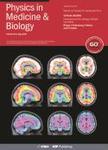版权所有:内蒙古大学图书馆 技术提供:维普资讯• 智图
内蒙古自治区呼和浩特市赛罕区大学西街235号 邮编: 010021

作者机构:Univ Mediterranea Reggio Calabria DIIES Reggio Di Calabria Italy Erasmus MC Radiat Oncol Dept Hyperthermia Unit Rotterdam Netherlands Natl Res Council Italy Inst Electromagnet Sensing Environm IREA CNR Naples Italy Czech Tech Univ Fac Biomed Engn Prague Czech Republic Eindhoven Univ Technol Fac Elect Engn Eindhoven Netherlands
出 版 物:《PHYSICS IN MEDICINE AND BIOLOGY》 (医学和生物学中的物理学)
年 卷 期:2019年第64卷第1期
页 面:015013-015013页
核心收录:
学科分类:0831[工学-生物医学工程(可授工学、理学、医学学位)] 1001[医学-基础医学(可授医学、理学学位)] 1009[医学-特种医学] 10[医学]
基 金:Italian Ministry of Research under PRIN 'Field and Temperature Shaping for Microwave Hyperthermia' (FAT SAMMY) - COST Action MiMed [TD1301] Sim4Life (Zurich MedTech AG, Switzerland)
主 题:treatment planning constrained optimization convex programming SAR
摘 要:Clinical trials have shown that hyperthermia is a potent adjuvant to conventional cancer treatments, but the temperatures currently achieved in the clinic are still suboptimal. Hyperthermia treatment planning simulations have potential to improve the heating profile of phased-array applicators. An important open challenge is the development of an effective optimization procedure that enables uniform heating of the target region while keeping temperature below a threshold in healthy tissues. In this work, we analyzed the effectiveness and efficiency of a recently proposed optimization approach, i.e. focusing via constrained power optimization (FOCO), using 3D simulations of twelve clinical patient specific models. FOCO performance was compared against a clinically used particle swarm based optimization approach. Evaluation metrics were target coverage at the 25% iso-SAR level, target hotspot quotient, median target temperature (T50) and computational requirements. Our results show that, on average, constrained power focusing performs slightly better than the clinical benchmark (Delta T50 = +0.05 degrees C), but outperforms this clinical benchmark for large target volumes (40 cm(3), Delta T50 = +0.39 degrees C). In addition, the results are achieved in a shorter time ( - 44%) and are repeatable because the approach is formulated as a convex optimization problem.